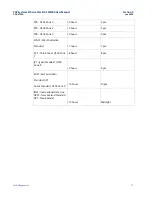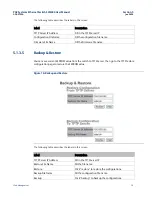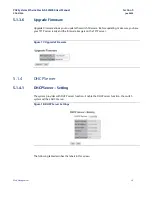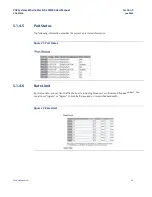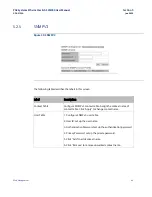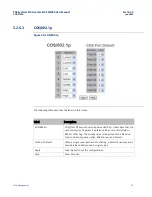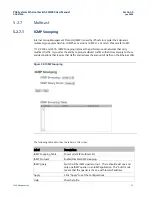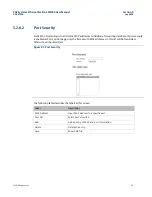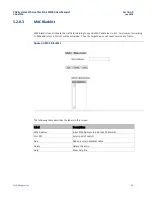
PACSystems Ethernet Switch SLM080 User Manual
Section 5
GFK-3125A
Jan 2020
Web Management
41
5.2.2
VLAN
A Virtual LAN (VLAN) is a logical network grouping that limits the broadcast domain, which allows you
to isolate network traffic. Only the members of the VLAN will receive traffic from the same members of
VLAN. Basically, creating a VLAN from a switch is logically equivalent of reconnecting a group of
network devices to another Layer 2 switch. However, all the network devices are still plugged into the
same switch physically.
The switch supports port-based and 802.1Q (tagged-based) VLAN. The default configuration of
VLAN operation mode is at
“
802.1Q
”
.
5.2.3
VLAN Setting - IEEE 802.1Q
Tagged-based VLAN is an IEEE 802.1Q specification standard, and t is possible to create a VLAN across
devices from different switch venders. IEEE 802.1Q VLAN uses a technique to insert a
“
tag
” into
the
Ethernet frames. Tag contains a VLAN Identifier (VID) that indicates the VLAN numbers.
You can create Tag-based VLAN, and enable or disable GVRP protocol. There are 256 VLAN groups to
provide configure. Enable 802.1Q VLAN, the all ports on the switch belong to default VLAN, VID is 1.
The default VLAN cannot be deleted.
GVRP allows automatic VLAN configuration between the switch and nodes. If the switch is connected
to a device with GVRP enabled, you can send a GVRP request by using the VID of a VLAN defined on the
switch; the switch will automatically add that device to the existing VLAN.
Figure 28: VLAN Setting

